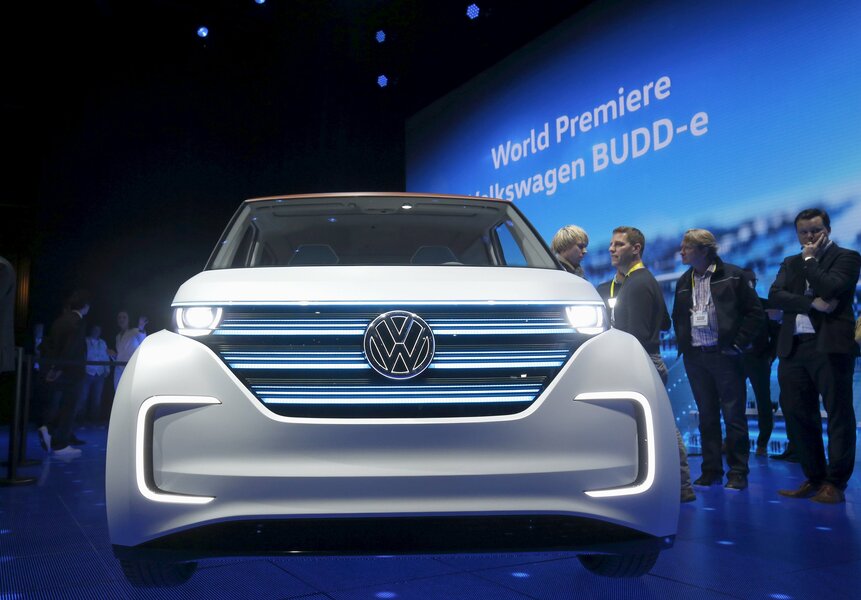Volkswagen BUDD-e: all-electric family bus signals the automaker's future
Loading...
On the eve of the Consumer Electronics Show (CES), Volkswagen has revealed the Budd-e concept, a vehicle that follows up on some of the purpose and utility of the Microbus, yet looks to the next decade, as a compelling template for an all-electric family vehicle.
The Budd-e Concept, in many ways, is the first of a new generation of plug-in vehicles. It’s the first vehicle based on the new Modular Electric Toolkit (MEB), a platform developed to help maximize the space-efficient packaging possible for plug-in vehicles and accommodate larger batteries.
If produced, it could be the first vehicle from a non-luxury brand to use such a large (101-kWh) battery pack; and it could be one of the first vehicles to use the new, even quicker fast-charging standard that the VW Group is considering.
Compact by U.S. standards
The Budd-e is 181 inches long, 76.3 inches wide, and 72.2 inches high, which makes it about the size of the (now discontinued) Mazda 5. Short overhangs and a long 124.1-inch wheelbase help this design look planted and elongated.
The battery is fully flat, and its mounting underneath almost the entire vehicle floor helps maintain this vehicle’s expected van-like spaciousness and versatility.
The Budd-e is powered by separate front and rear motors, providing all-wheel drive and allowing a top speed of 93 mph. Its claimed 373-mile range is based on the European combined cycle, so the official U.S. driving range will likely be closer to the 300-mile mark.
CHECK OUT: Tesla 2015 Deliveries Squeak Past 50,000, With 208 Model X During Q4
VW says that with a special charging system the 101-kWh battery pack could be charged to 80 percent in just 15 minutes. Cordless inductive charging would also be on the menu.
With the new platform come some new ways of thinking about where core systems are mounted and why. Here, heating and air conditioning has been engineered into the front end of the vehicle, allowing larger air filters and a reduction of fan noise.
Completely new interface
Interior design is another primary focus of the Budd-e, which shows off a completely new and reconceived human-machine interface (HMI). The traditional division between driver’s gauges and the other controls has been eliminated, merging them into one continuous “information hub”—with true 3D map displays thanks to two separate displays that visually blend into one.
The instrument cluster itself is programmable and an evolution of the Active Info Display that VW introduced in 2015 on some vehicles—here including a 12.3-inch curved display with three configurable sections for the driver.
Between gesture control, a touch-screen display, voice control, and new-generation steering-wheel controls, the driver has plenty of control options. Passengers do, too, with a lounge-like, reconfigurable seating setup that’s unlikely to make it through to any production version soon due to safety regulations but gives hints of future autonomous versions, perhaps.
Like many modern concept cars, the Budd-e goes without traditional exterior mirrors; the driver and front passenger both get images from the e-mirrors via multi-function displays.
The concept also features VW’s new Gesture Control 2.0, which isn’t just for the driver but for other vehicle functions; a gesture will open the power sliding door, for example. And VW says that the gesture-control system, like the always-on “Okay Google” functionality on some smartphones, isn’t one that you need to activate first with a button.
Volkswagen hasn’t revealed any up-close details on the new battery pack yet, but look for more details on it and on this concept’s likelihood of production as we cover the reveal and CES this week.







